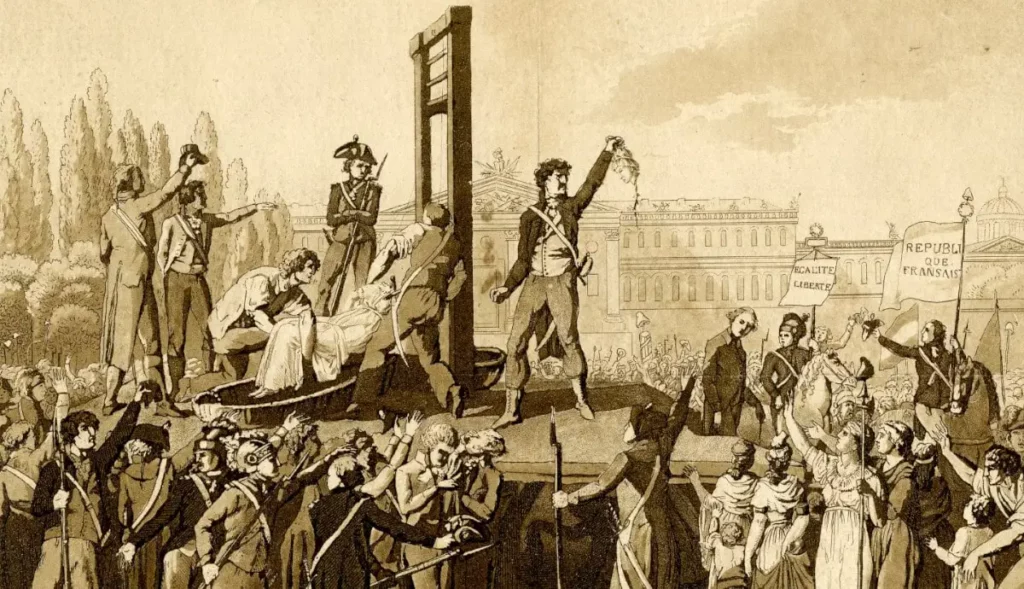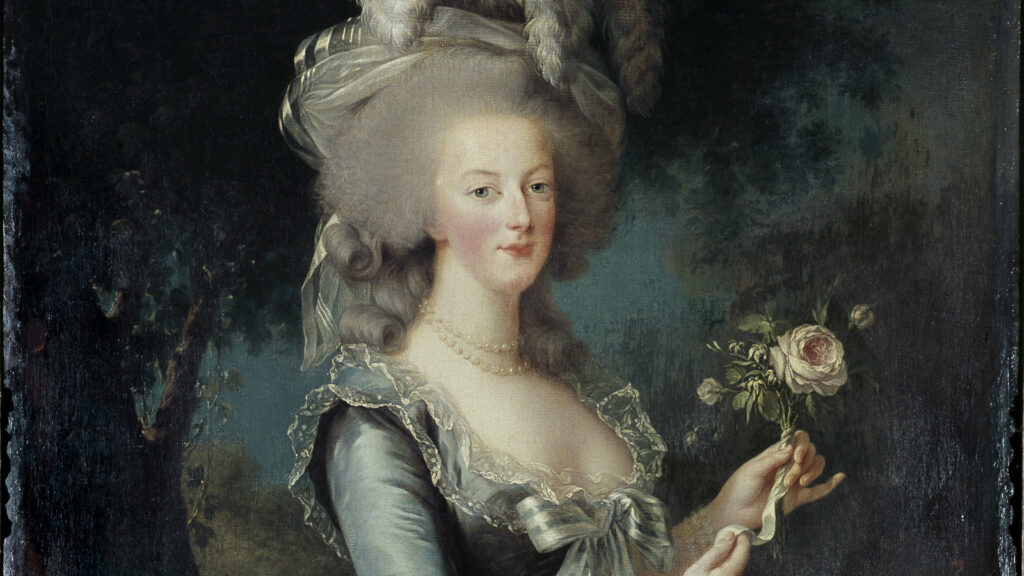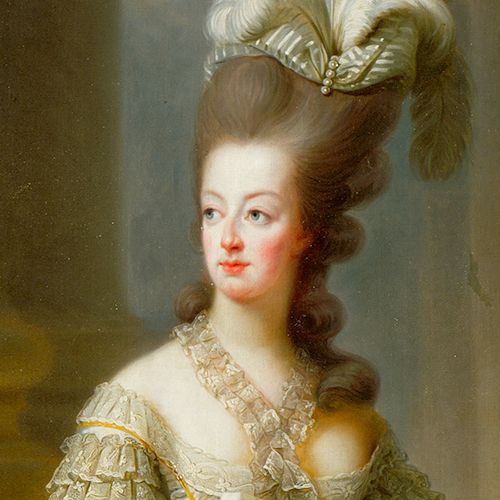There is something about the execution of a monarch that sticks in people’s minds for hundreds of years. To go from the highest position in society to the guillotine seems almost unreal, but this was the fate of French queen Marie Antoinette.
The French Revolution swept through the country like an unavoidable tide, taking the royals with it. King Louis XVI was sent to the guillotine first, with his wife, Queen Marie Antoinette, following not too long after. The queen’s reputation had been in tatters before the revolution, but once it began, there was no stopping her fate.
Marie Antoinette may have been privileged, but her end was instead gruesome and terrible.

The Early Life of Marie Antoinette
Marie Antoinette was only 14 when she was brought from her home in Austria to marry the dauphin of Francis, Louis Auguste. The young future queen had been raised in luxury befitting her station as the daughter of the Empress of Austria, but she was unprepared for the enormous frivolity of the French court and struggled to adjust.
Not only that, but Marie Antoinette was not overly fond of her husband. She found him to be dull and timid and was disappointed that they shared so few interests. This left Marie Antoinette feeling alone in her new world.
She only had four years to try and adjust before she became queen.

To fill the void of loneliness, Marie Antoinette began to spend her time indulging herself. The French court was especially suited to this pursuit, being a luxurious and decadent environment.
Her expenditures didn’t go unnoticed by the common people of France, though. The French economy was in turmoil, and a queen decked out in finery and jewels felt like a slap in the face to a lot of them.
It didn’t matter to them that Marie Antoinette was a kind-hearted woman at her core who often adopted less fortunate children. To them, she was a symbol of the monarchy and all that it represented–obscene wealth in the face of a suffering population.
Marie Antoinette and the French Revolution
Everything came to a head when, in the summer of 1789, a group of Parisians rushed into the Bastille and freed all the prisoners there. Later, they stored Versailles, rioting over the high price of bread and the starvation that was sweeping through the lower class. It was the early days of the French Revolution.
The queen knew what was in her future if she didn’t manage to make it out of France. The violence and anger of her subjects were growing, as was their ire for the royal family.
Once inside the palace gates, the mob rushed into the queen’s quarters, killing her guards before she escaped, fleeing to the king’s quarters. Her reprieve there was short-lived, and within hours, she and the king were being led by the angry mob to Paris, preceded by the heads of their bodyguards being carried on spikes.

In Paris, she and the king withdrew into self-imposed solitude within the old Tuileries palace. Where the king seemed downtrodden and afraid, Marie-Antoinette stepped up to try and find their freedom. She reached out to allies, only to hear nothing back, but she had one more plan–to flee to the Netherlands, specifically to the part controlled by her home country, Austria.
Aided by a man later assumed to be her lover, Marie Antoinette, her children, and her husband the king fled Tuilieres in the dead of night, dressed as servants. They took a large, ostentatious carriage which would ultimately be their downfall.
The huge carriage was a giveaway, and only miles from Tuileries, the royal family was captured once more and brought back to Paris. Louis gave escape one last try, fleeing on foot with his family, but again they were caught.
This time, Marie Antoinette and her family were locked in the Temple Tower. Not long after, the monarchy was abolished, and the Republic was put in its place. Just like that, Marie Antoinette was queen no more.
To Marie Antoinette’s horror, after a brief period of peace for her and her family, Louis was put on trial for conspiring against the state and sentenced to death. He was given a day to spend with his wife and children before his execution. At only 36, Louis was taken to the guillotine on January 16, 1793, and executed before an enormous crowd.
Marie Antoinette and her children remained in the Temple Tower for six months, before she was moved, alone to the Conciergerie, a prison. Her trial followed soon after, where she was charged with conspiracy against France. She was found guilty of treason, and like her husband, the disgraced queen was sentenced to death.
Marie Antoinette’s Execution
On the day of her execution, Marie Antoinette was surprisingly calm. Maybe it was the inevitability of it all, or maybe it was the fact that finally, the last few horrible months of her life would be over. Either way, she was allowed to write a letter to her sister, where she said,
“I am calm, as people are whose conscience is clear.”
Her long hair had gone white from stress during her trial, and before she was taken to the scaffold, the snowy locks were cut. Then, she was loaded into an open wagon and taken to her own execution.
The crowd that had gathered was immense, but Marie Antoinette gave them no emotion, remaining stoic as she was led up the scaffold. One of her last acts was to apologize to the executioner as she stepped on his foot, telling the man earnestly, “Pardon me, sir. I didn’t mean to.”
That quiet apology would be her last words.
At 12:15 p.m. on October 16, 1793, Marie Antoinette’s head was severed via guillotine. Around her, the crowd roared in approval.
Even in death, the former queen was given little dignity. Her head and body were loaded into a cart and hauled off to a mass grave behind the Church of Madeleine, destined to lay with the commoners who had so vehemently sought her death.
Years later, Marie Antoinette would finally receive a modicum of respect, when her husband’s brother took the throne as king and had her and his older brother disinterred and reburied in Saint-Denis Cathedral. Finally, a fitting resting place for a gentle queen who lived a life of decadence, and eventually lost her life for it.

